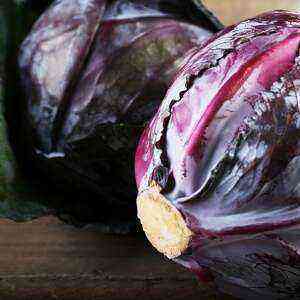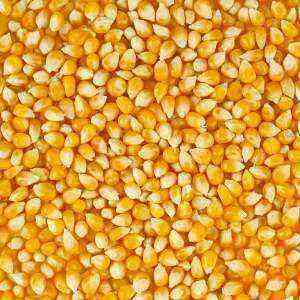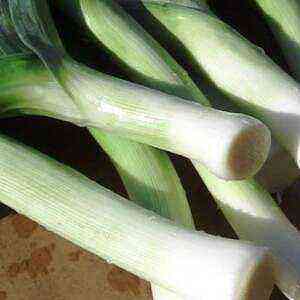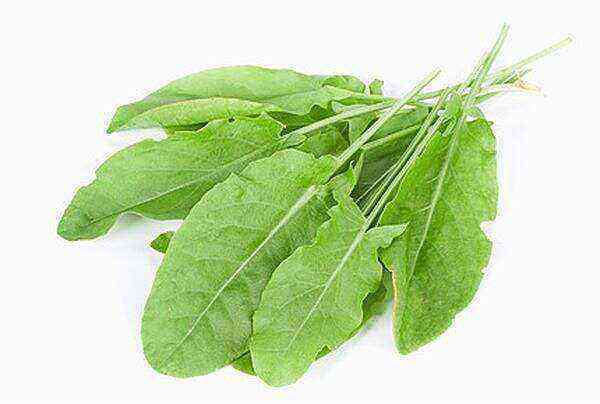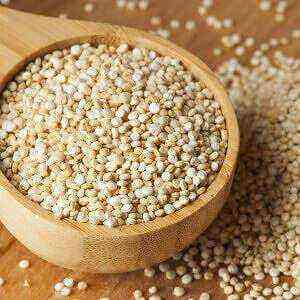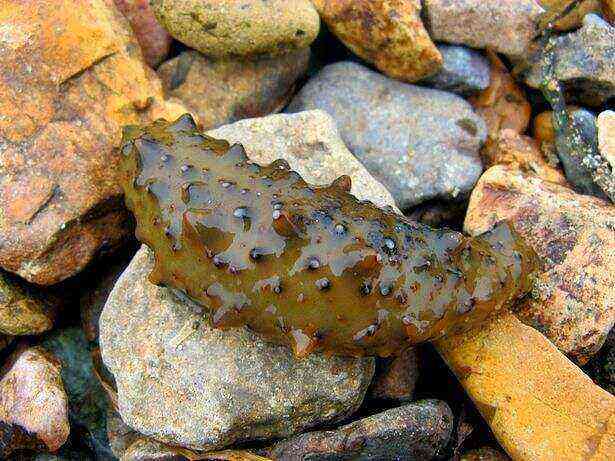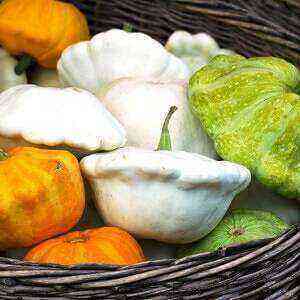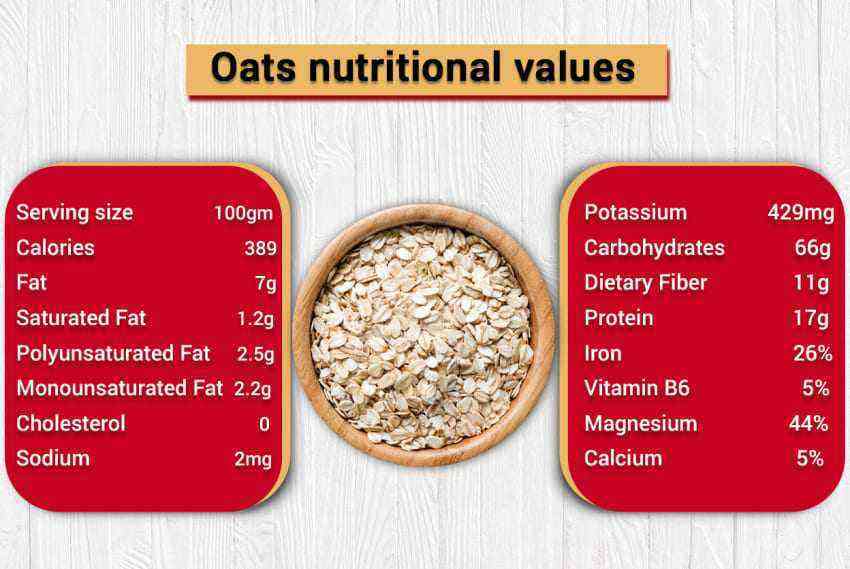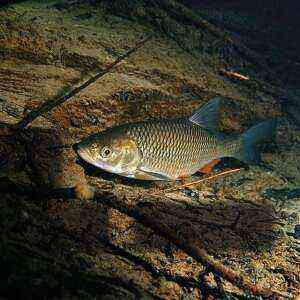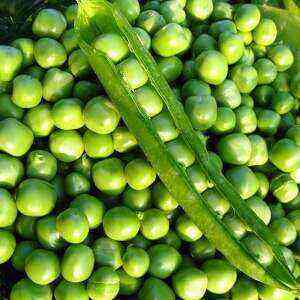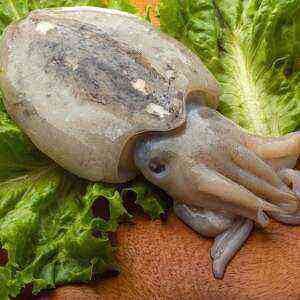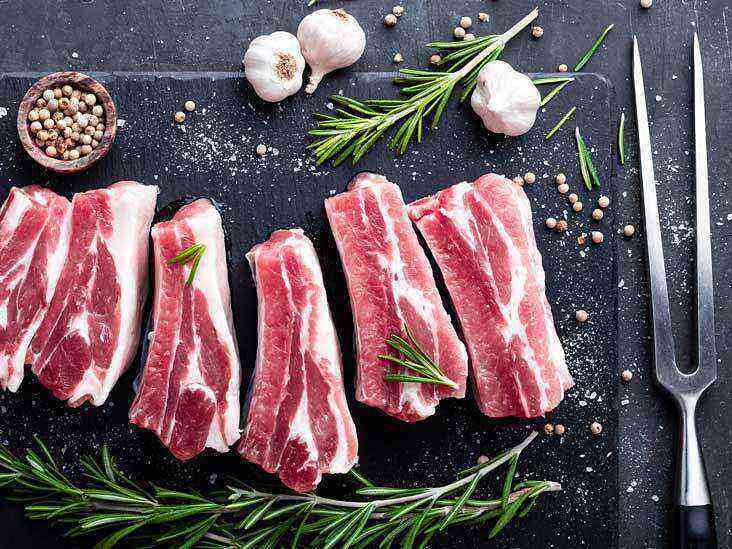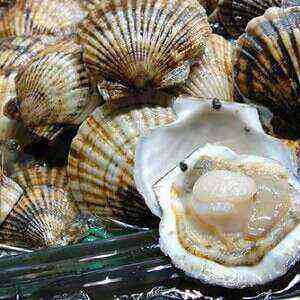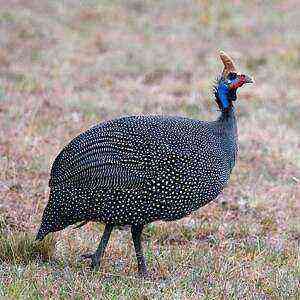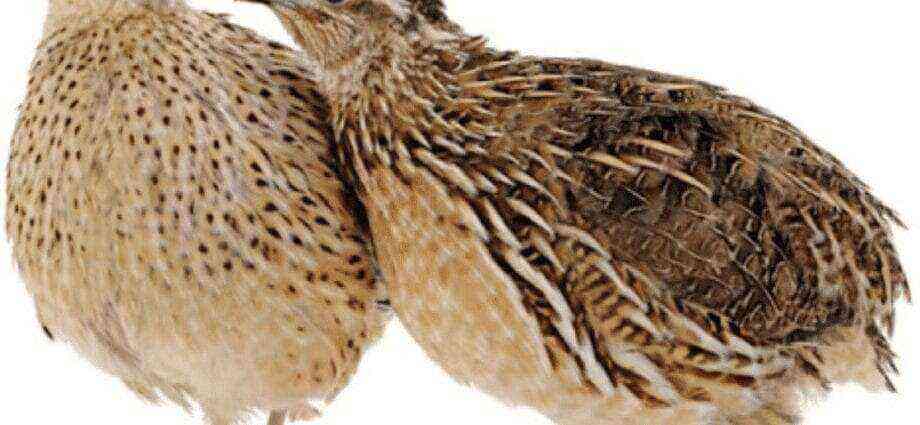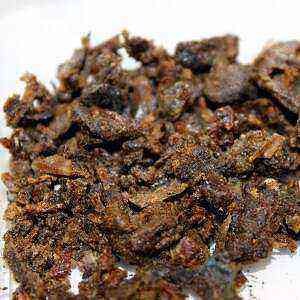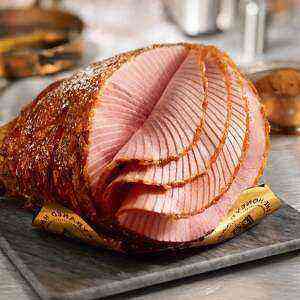 The name of this product comes from the word “decrepit”, although this does not mean at all that it is old and unsuitable for consumption. The ham, which will be discussed later, was invented as food for long-term storage. Even in ancient times, after special processing, pieces of meat (usually pork is used for these purposes) could be stored for months. Today the meaning of this word has changed a bit. Ham is now called smoked or salted pork, and there are hundreds of variations of this product. But is meat useful in this form, how often can you consume it, and is it worth it to eat at all?
The name of this product comes from the word “decrepit”, although this does not mean at all that it is old and unsuitable for consumption. The ham, which will be discussed later, was invented as food for long-term storage. Even in ancient times, after special processing, pieces of meat (usually pork is used for these purposes) could be stored for months. Today the meaning of this word has changed a bit. Ham is now called smoked or salted pork, and there are hundreds of variations of this product. But is meat useful in this form, how often can you consume it, and is it worth it to eat at all?
History of origin
Today this pork product is world famous. Taming of pigs historians attribute to the Chinese. It is they, as researchers of the past assure, that around 4900 BC, they first prepared a dish of a domesticated pig. Europe learned the taste of home-made pork only in 1500 BC. By the 1926th century, these pets had already reached the New World and Africa. In those days, salted pork has already gained its worldwide popularity. They say that something similar to ham was prepared by the culinary specialists of Ancient Rome, who in the XNUMXst century BC e. described in detail the technology of smoking ham. The first canned ham appeared in the twentieth century. It was invented by the American George Hormel in XNUMX. Ham in his recipe, filled with a jelly-like substance, can be bought in supermarkets today.
And although classical ham is a meat dish made from pork, but from different nations and at different times it was made from beef, venison, turkey and even chicken. Traditionally, pork ham is taken for the dish, although some gourmets prefer the back or front scapula, which is first salted and then slightly drenched.
Varieties and types of ham
 Depending on the method of production, ham is:
Depending on the method of production, ham is:
- smoked;
- boiled;
- cooked smoked;
- shaped;
- canned;
- smoked baked;
- dry-cured, etc.
For boiled ham, as a rule, use pork ham, previously aged in brine. The meat is brought to readiness “in company” with onions, carrots and spices. Raw materials for boiled-smoked ham are first pickled, then smoked and only then cooked in water with spices. This variant differs from others in soft pink color of meat and a golden crust.
Ham in different countries
This dish, as already mentioned, is prepared in most countries of the world. But under the influence of national gastronomic traditions, ham may differ significantly among different nations. Here are some examples.
China. Here this dish is known from the tenth century. “Smoked ham Jinhua” and now is prepared according to an ancient recipe, then add it to the equally delicious old dishes “Buddha jumps over the wall”, “Duck’s legs”, “Peacock”.
 France. First dried in the open air, and then the salted piece of pork is called by the local population Bayonian ham and traditionally eaten with peasant bread, buttered. Another name for this product is Basque uncooked smoked ham. And the part of the carcass, cleared of bones and harvested in a special form, is known as French jamon – not less popular type of meat delicacy.
France. First dried in the open air, and then the salted piece of pork is called by the local population Bayonian ham and traditionally eaten with peasant bread, buttered. Another name for this product is Basque uncooked smoked ham. And the part of the carcass, cleared of bones and harvested in a special form, is known as French jamon – not less popular type of meat delicacy.
Germany. Westphalian ham is made from piglets, in whose diet only acorns from the forests of Westphalia were in the diet. This meat is also smoked in a special way: only on juniper and beech. Black Forest ham is meat dried and smoked on spruce cones. Both products are considered the hallmark of Germany.
Ireland. Belfast is famous for its salty meats delicacies. But what makes them truly special is the unusual smoking process. Meat gets its unique flavor from peat fires.
England. York ham has a mild flavor and a delicate aroma. Pale pink meat is traditionally consumed with madeira sauce.
Italy. Well, who has not heard of the Italian prosciutto. One of its variations is Parma ham, cooked from a large ham (more than 10 kg). The raw material for this product is only the meat of young hogs grown in a certain area. The process of cooking this dish takes at least a year. This ham variety is low in salt. Prosciutto from Tuscany is characterized by a large number of spices used for salting, and the ham “di San Daniele” is very salty and dry. Many types of ham made in Italy are pre-soaked in wine, which gives them a special tenderness.
Spain. In this country, carefully follow the “instructions” for the preparation of meat delicacy. It spelled out not only what meat should be taken for ham, but also where pigs should be raised and what to feed. Each item of meat processing is painted in no less detail. By the way, for the manufacture of this dry-cured product does not use anything other than pork and salt, as well as fresh mountain air, on which the meat “ripens”. Hamon Serrano (Spanish ham) is prepared only from white piglets.
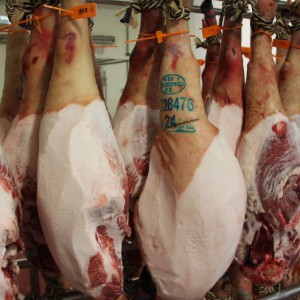 Portugal. The local fiambre reminds some Spaniards ham. But as the raw material here they take only the meat of black Iberian piglets.
Portugal. The local fiambre reminds some Spaniards ham. But as the raw material here they take only the meat of black Iberian piglets.
Philippines. Perhaps the most amazing ham is made here – sweet. Before harvesting, the meat is kept in a sweet syrup until all the salt is out of the carcass.
Canada. For many years, the local population has smoked brisket and middle back. In the finished form, the product is a cross between bacon and ham.
USA. “People’s” ham in American style is made in the highlands on the border with Canada. Every year at the end of November piglets raised on chestnut fodder are slaughtered here. But the main meat pride of Americans – Smithfield ham. It is prepared for several years (from 1 to 7), it is very salty and covered with a layer of mold, but at the same time it has an incomparable taste, which determines the high cost of the finished product.
Bulgaria. The “capital” of ham in this country is located near the city of Elena. The Bulgarian recipe provides for keeping the meat in brine for 45 days, thanks to which pork acquires a special taste that makes it easy to recognize the country of origin.
Russia. Here and in many countries of the CIS two types of ham are most popular. The so-called Tambov – cooked smoked and smoked according to the Voronezh recipe. No less popular are brisket and bacon. Other varieties of ham in the CIS – a rarity.
How to cook the right ham
The quality of the finished product directly depends on the quality of the raw materials used. For this reason, many countries follow fairly stringent rules for making ham.
Often for this delicacy take the meat of pigs, which were fed nuts and fruits. The fillet of such animals is especially tender and soft. The second rule is the age of the animal. The most delicious ham is obtained from the meat of young pigs. Although some recipes require some older animals. The third condition – the observance of the correct temperature and duration of drying. These nuances of technology determine the taste and quality of the finished product.
Parma Ham Recipe
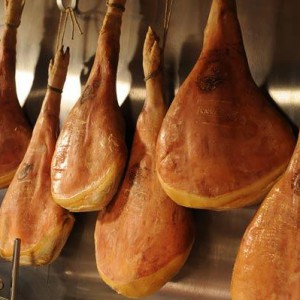 Parma ham is one of the most delicious meat delicacies. But it is not necessary to go to Italy to try it. Parma recipe can be cooked at home.
Parma ham is one of the most delicious meat delicacies. But it is not necessary to go to Italy to try it. Parma recipe can be cooked at home.
To cook this delicacy, you need to take 1 pork leg, although the brisket or undercuts can also come up. To begin with, you will have to send the meat to the refrigerator overnight to cool it carefully. After that, grate the seasoning mixture. Prepare it from sea salt, brown sugar, black pepper, dried juniper berries and garlic powder. Also, if desired, preservatives in the form of sodium nitrite or sodium nitrate can be added. The next step is to wrap the leg tightly with food-grade film or pack it in a vacuum package and put it in the refrigerator again (this time for 15 days).
Then get the meat, rub it again with a mixture of seasonings (the same composition) and again send in the cold for 15 days. After the leg pour warm water and leave for 30 minutes, then hang it on a draft for about 6 hours. The penultimate stage of cooking Parma ham lasts 3 days – that is how much time the meat should be stored in limbo in a warm room. And the last step: spread meat with black pepper and fat, dry at a temperature of 15 degrees Celsius and a relative humidity of 70 percent for at least another 30 days.
How to store
As a rule, ready-made ham without a loss of quality can be stored in the refrigerator for about a week. Although there are varieties that can lie in a cool place and up to 2 months, and freezing will help some to extend life to 3 months. However, before sending the ham into the freezer, it is important to understand: most likely, after defrosting, it will lose its delicate pink color and become a grayish-brown shade, and in some varieties the texture will suffer.
But the canned product after opening the sealed package should not be stored for more than 5 days.
Ham: the benefits and harm to humans
 In the old days, when soldiers went to war, in order to prevent rotting of meat, it was dipped in brine and smoked. Ham provided soldiers with protein, energy and nutrients found in pork. But for a modern person, daily consumption of ham is not always justified. At least, nutritionists try to convince of it. And there are several reasons for confirmation.
In the old days, when soldiers went to war, in order to prevent rotting of meat, it was dipped in brine and smoked. Ham provided soldiers with protein, energy and nutrients found in pork. But for a modern person, daily consumption of ham is not always justified. At least, nutritionists try to convince of it. And there are several reasons for confirmation.
Sodium
High sodium content is one of the main hazards of ham. Since the meat was initially treated with salt, the finished product is very high in sodium (an 80 gram slice has 1270 mg out of the 1500 mg RDA). And you don’t need to be a doctor to understand that excessive salt intake does not have the best effect on health. As a result of sodium overdose, bloating, hypertension, inflammation of the joints or their exacerbation are possible.
To reduce the concentration of sodium in the ham, before use, the product can be soaked in warm water for 4-12 hours.
Fats and Calories
Ham is rich in saturated fats, which is also not good news. Most calories in this product come from fat. And too frequent consumption of saturated lipids (remain solid at room temperature) leads to an increase in cholesterol, the formation of “plaques” in the vessels and subsequently – cardiovascular diseases. In addition, it is important to know that a slice of ham, weighing only 25 grams, contains about 50 kilocalories, and most of it comes from fats. To reduce calorie content and get rid of excess fat, ham can be sent to the oven for a while, after making as many cuts on a piece of meat as possible (this will speed up the drainage of fat).
Cancer and other hazards
In 2007, researchers who studied the effects of different types of foods on health status came to a disappointing conclusion. It turned out that regular consumption of ham and some other meat products may increase the risk of cancer by almost 20 percent. The most common cancer of the colon or lung. And in the 2012 year, researchers still proved that processed meat increases the risk of cardiovascular diseases and diabetes of the 2 type.
Useful Properties
 Meanwhile, one cannot say that ham is a harmful product. Like other types of red meat, it serves as a rich source of protein (almost 40% of the daily intake for adults). In addition, it is a storehouse of important minerals and vitamins. The consumption of this delicacy will allow replenishing the reserves of copper, iron, potassium, magnesium, zinc, riboflavin, vitamins B6 and B12.
Meanwhile, one cannot say that ham is a harmful product. Like other types of red meat, it serves as a rich source of protein (almost 40% of the daily intake for adults). In addition, it is a storehouse of important minerals and vitamins. The consumption of this delicacy will allow replenishing the reserves of copper, iron, potassium, magnesium, zinc, riboflavin, vitamins B6 and B12.
The average serving of ham is:
These substances are essential for maintaining proper liver function, healthy skin, eyes, and hair. Also called vitamins will help support proper digestion and provide the body with the necessary energy.
In addition, a serving of ham contains:
- 20% of the daily norm of phosphorus (necessary for the formation of DNA);
- 10% potassium (important for the nervous system and proper muscle function);
- 14% zinc (strengthens the immune system).
And if you consume ham in moderation, while leading an active lifestyle, you can not be afraid of either extra calories or fat. On the other hand, fatty pork can always be replaced with more dietary chicken, beef, turkey or lamb.
Of course, ham can hardly be called healthy food with healing properties. Meanwhile, a moderate intake of this product will provide the body with many beneficial substances without any side effects.



